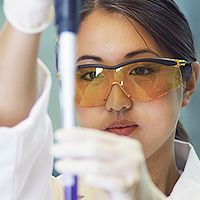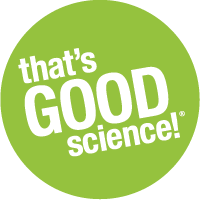This protocol for performing single-cell ATAC-seq was developed using the ICELL8 Single-Cell System by the Greenleaf lab at Stanford University in consultation with Takara Bio USA, Inc.a Please direct any requests for more information to the authors.
User-generated protocol
Using the ICELL8 system for single-cell ATAC-Seq: protocol
Introduction
Protocol
A. Cell staining and preparation
1. Prepare suspension(s) of your chosen cell type(s) in their respective media.
2. Stain cells with Hoechst stain and propidium iodide as described below:
- Prepare a 1:1 mixture of Hoechst 33342 and propidium iodide. Prepare 320 µl of dye solution by adding 160 µl each of Hoechst 33342 and propidium iodide.
- Add 320 µl of dye solution to 2 ml of cells in medium. Mix gently by inverting the tube five times. Incubate cells at 37°C for 20 min.
- Wash the stained cells twice with ice-cold 0.5X PBS and resuspend in 0.5X cold PBS. Keep the stained cell suspension on ice.
3. Count cells and dilute to a final concentration of 1 cell/40 nlb as indicated in Table 1 below:
| Components | Cell Dispensation Mix | Negative control |
| Second Diluent (100X) | 10 µl | 1 µl |
| RNAse Inhibitor (40 U/µl) | 10 µl | 1 µl |
| Stained cell suspension | Dilute to 1 cell/40 nl | N/A |
| 0.5x PBS | To 1,000 µl | 98 µl |
| Total volume | 1,000 µl | 100 µl |
Table 1. Cell suspension mix.
4. Using a wide-bore 1-ml pipette tip, gently mix the diluted stained cell suspension by slowly pipetting up and down ~5 times. Do not vortex or over-agitate the cells.
5. Using a 200 µl pipette tip, slowly and carefully load 80 µl of diluted cell suspension into the wells of a 384-well source plate as indicated in Figure 1 (below).
NOTE: A plate map is available in the publication's supplementary data. Index maps can be downloaded here.

Figure 1. Setting up the 384-well source plate for dispensing cell samples and controls.
6. Pipette 25 µl each of fiducial mix (Cat. # 640196), positive controlc and negative control into the wells of a 384-well source plate as indicated in Figure 1.
NOTE: To avoid contamination, use a new 384-well source plate during each dispensing step.
7. Use the ICELL8 MultiSample NanoDispenser (MSND) from the ICELL8 Single-Cell System (Cat. # 640000) to dispense stained cells into a ICELL8 250v Chip (Cat. # 640183) by clicking [Dispense cells] (Figure 2) (refer to the ICELL8 MultiSample NanoDispenser User Manual for more information).

Figure 2. MSND software control panel for dispensing various solutions from 384-well source plates.
8. Following cell dispense, seal the chip with Optical Imaging Film (Cat. # 640109) and centrifuge at 300g for 5 min at 4°C.
9. Proceed to automated fluorescent imaging of chips on the ICELL8 Imaging System (refer to the CellSelect Software User Manual for more information).
10. Analyze images with the CellSelect Software to generate a filter file identifying the wells containing single cells. Each subsequent dispensing step will use this filter file to dispense reagents into the selected nanowells. Keep the chip on a cold block (4°C) while the images are being analyzed using CellSelect Software.
11. Proceed to Transposition assay.
B. Transposition assay
1. While the chip is on the cold block, proceed to mix reagents for Tagmentation Mix as indicated in the table below:

2. Pipette 50 µl of Tagmentation Mix into each well (indicated in Figure 1) of a new 384-well source plate.
3. Peel off the imaging film from the chip. Place the chip on the chuck of the Dispensing Platform in the MSND. Ensure the chamfered (notched) corner of the chip is at the lower-right corner of the Dispensing Platform and aligned with the chamfered corner of the chuck. Make sure to set the MSND software to dispense 40 nl per dispensation.
4. Click the [Tagmentation] button in the MSND software (Figure 2) to dispense 40 nl of the Tagmentation Mix into each nanowell identified by the filter file.
5. Seal the chip with imaging film, centrifuge at 300g at 4°C for 3 min, and use the following PCR program to incubate the chip for 30 min:

C. Indexing and PCR
1. Mix custom i5 indexd reagents and dispense into wells as indicated in Figure 1.
NOTE: These volumes are per well for the 384-well source plate.
2. Once incubation is complete, centrifuge the chip at 3,220g at 4°C for 3 min.
3. Prepare a total of 72 i5 index reactions using the volume indicated below for each index. Pipette 20 µl of i5 indexing mix into each well of the 384-well source plate indicated in Figure 1.
NOTE: The high EDTA concentration is necessary for releasing bound transposase enzyme.

4. Peel off the imaging film from the chip. Place the chip on the chuck of the Dispensing Platform in the MSND. Ensure the chamfered (notched) corner of the chip is at the lower-right corner of the Dispensing Platform and aligned with the chamfered corner of the chuck. Ensure the MSND software is set to 40 nl per dispensation.
5. Dispense 40 nl of i5 indexing mix into targeted nanowells by clicking 'Index 1', then seal the chip with imaging film. Centrifuge at 3,220g for 3 min, then use the following PCR program to incubate your chip for 30 min:

6. Once incubation is complete, centrifuge the chip at 3,220g at 4°C for 3 min.
7. Mix Nextera® i7 indexd reagents as indicated in the table below.
NOTE: These volumes are per well for the 384-well source plate.
8. Prepare a total of 72 i7 index reactions using the volumes indicated below for each index. Pipette 20 µl of i7 indexing mix into each well of the 384-well source plate indicated in Figure 1.

9. Peel off the imaging film from the chip. Place the chip on the chuck of the Dispensing Platform in the MSND. Ensure the chamfered (notched) corner of the chip is at the lower-right corner of the Dispensing Platform and aligned with the chamfered corner of the chuck. Make sure to set the MSND software to dispense 40 nl per dispensation.
10. Dispense 40 nl of i7 indexing mix into targeted nanowells by clicking 'Index 2', then seal the chip with imaging film. Centrifuge at 3,220g for 3 min, then incubate for 5 min at room temperature.
NOTE: This step quenches the high EDTA concentration and is necessary before performing on-chip PCR.
11. Mix reagents for on-chip PCR as indicated in the table below.

12. Pipette 50 µl of PCR master mix into each well of the 384-well source plate indicated in Figure 1.
13. Peel off the imaging film from the chip. Place the chip on the chuck of the Dispensing Platform in the MSND. Ensure the chamfered (notched) corner of the chip is at the lower-right corner of the Dispensing Platform and aligned with the chamfered corner of the chuck. Make sure to set the MSND software to dispense 40 nl per dispensation.
14. Click the 'RT-PCR' button in the MSND software (Figure 2) to dispense 40 nl of the RT-PCR mix into each nanowell identified by the filter file.
15. Seal the chip with TE Sealing Film (Cat. # 640109), and centrifuge at 3,220g for 3 min.
16. Perform PCR using the following ICELL8 Chip Cycler conditions:

17. Remove the chip from the ICELL8 Chip Cycler. Centrifuge the chip at 3,220g for 3 min at 4°C.
18. Open the supplied Collection Kit (Cat. # 640048) and label a Collection Tube with the engraved chip number. Assemble the Collection Module by attaching the Collection Tube to the Collection Fixture. Carefully peel off the TE Sealing Film from the chip.
19. With the nanowells facing down, place the chip into the assembled Collection Module (consisting of the Collection Tube plus the Collection Fixture). Seal the chip and the top of the Collection Module with a supplied Collection Film.
20. Collect PCR products from the chip by centrifuging at 3,220g for 10 min at 4°C.
D. Purification and additional amplification
1. Purify collected PCR products using MinElute PCR purification columns (Qiagen, Cat. # 28004) following manufacturer's instructions.
NOTE: Due to large sample volume, PCR products will need to be split across four columns, eluted in 10 µl per column, and subsequently pooled.
2. Perform bead clean-up of purified and pooled PCR products using AMPure XP beads (Beckman Coulter, Cat. # A63880): incubate PCR products with beads for 8 min at a 1:1.2 ratio, pellet beads, discard supernatant and wash pellet twice with 70% ethanol, and elute in 20 µl ultrapure water. Repeat once, for a total of two rounds of bead cleanup.
NOTE: This step removes free PCR primers to reduce induce index-swapping during sequencing.
3. Determine the number of additional off-chip amplification cycles required by mixing and running a qPCR reaction as outlined in the table below.

4. Perform 20 cycles of qPCR using the following thermocycler conditions:

5. Determine the number of cycles that correspond to one-third of the maximum fluorescence intensity observede.
6. Amplify the remaining 18 µl of PCR product using the PCR mix/conditions described above in Step D4 and the determined number of PCR cycles.
7. Purify amplified PCR product using Qiagen MinElute columns and perform library validation using Qubit and Bioanalyzer instrumentation before proceeding to Illumina sequencing.
Footnotes
a. Mezger, A. et al. High-throughput chromatin accessibility profiling at single-cell resolution. Nat Commun 9, 3647 (2018)
b. At the time of publication, the manufacturer was validating the use of 35 nl dispensation volumes, the volume to which the system is typically set to dispense. As the 40 nl volumes used in the validation of this protocol require adjustment to the system settings, please contact field support if you wish to use 40 nl volumes.
c. We note that the authors did not use a positive control in the publication, but this optional step has been included to give additional flexibility to users of this protocol.
d. i5 and i7 indexes were previously published in Buenrostro, J. D. et al. Single-cell chromatin accessibility reveals principles of regulatory variation. Nature 523, 486–90 (2015).
e. Previously established in Buenrostro, J. D. et al. Single-cell chromatin accessibility reveals principles of regulatory variation. Nature 523, 486–90 (2015).

User-generated protocols
User-generated protocols are based on internal proof-of-concept experiments, customer collaborations, and published literature. In some cases, relevant results are discussed in our research news BioView blog articles. While we expect these protocols to be successful in your hands, they may not be fully reviewed or optimized. We encourage you to contact us or refer to the published literature for more information about these user-generated and -reported protocols.
If you are looking for a product-specific, fully optimized User Manual or Protocol-At-A-Glance, please visit the product's product page, open the item's product details row in the price table, and click Documents. More detailed instructions for locating documents are available on our website FAQs page.
Questions? Protocols of your own that you would like to share?
Contact technical support Give feedback
Let us help you with your research
Our experienced team of Ph.D.-level scientists helped develop this protocol and now we're ready to help you advance your research. Let us know if you'd like additional information about this protocol or if you have any other questions or concerns.
Contact usTakara Bio USA, Inc.
United States/Canada: +1.800.662.2566 • Asia Pacific: +1.650.919.7300 • Europe: +33.(0)1.3904.6880 • Japan: +81.(0)77.565.6999
FOR RESEARCH USE ONLY. NOT FOR USE IN DIAGNOSTIC PROCEDURES. © 2025 Takara Bio Inc. All Rights Reserved. All trademarks are the property of Takara Bio Inc. or its affiliate(s) in the U.S. and/or other countries or their respective owners. Certain trademarks may not be registered in all jurisdictions. Additional product, intellectual property, and restricted use information is available at takarabio.com.




